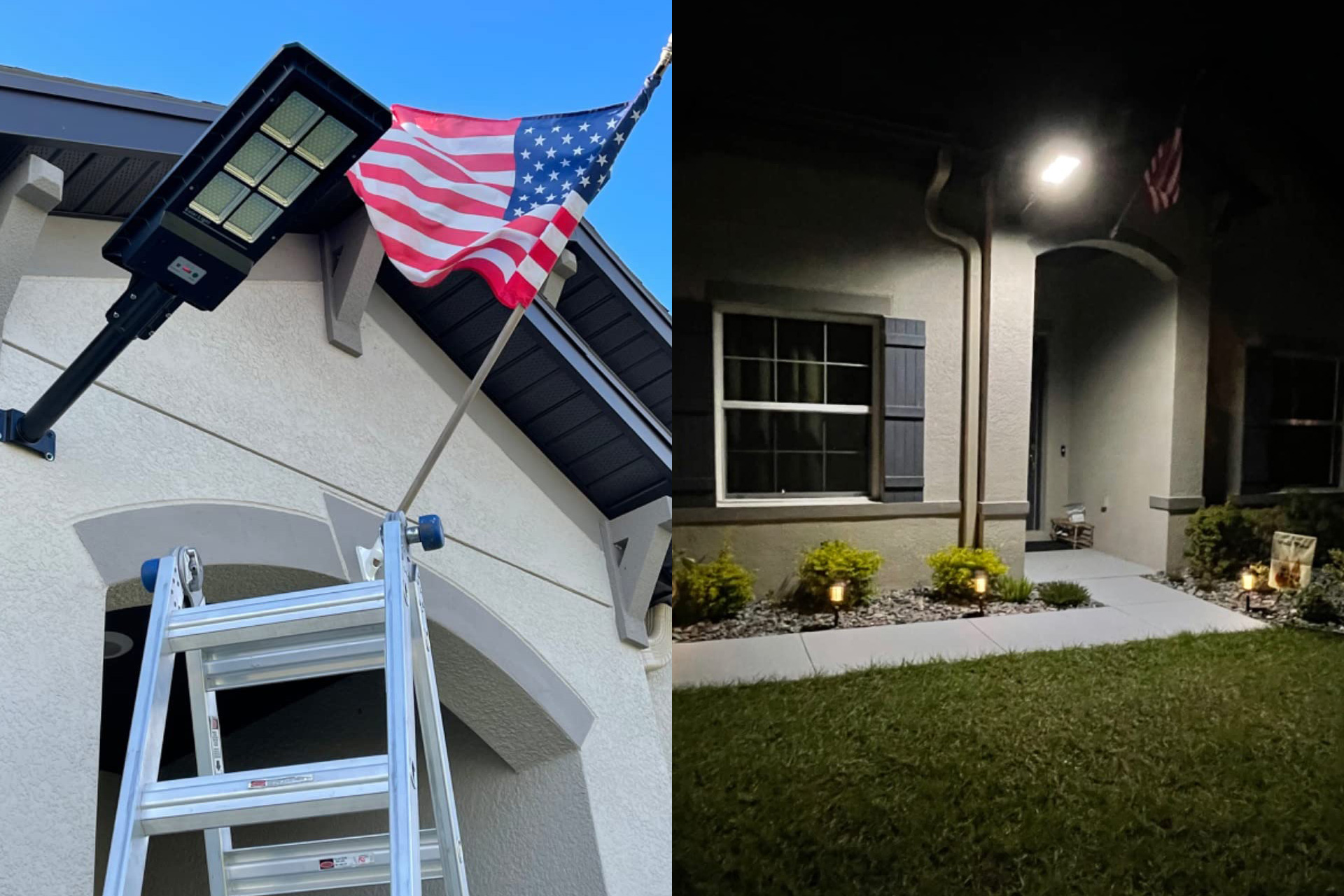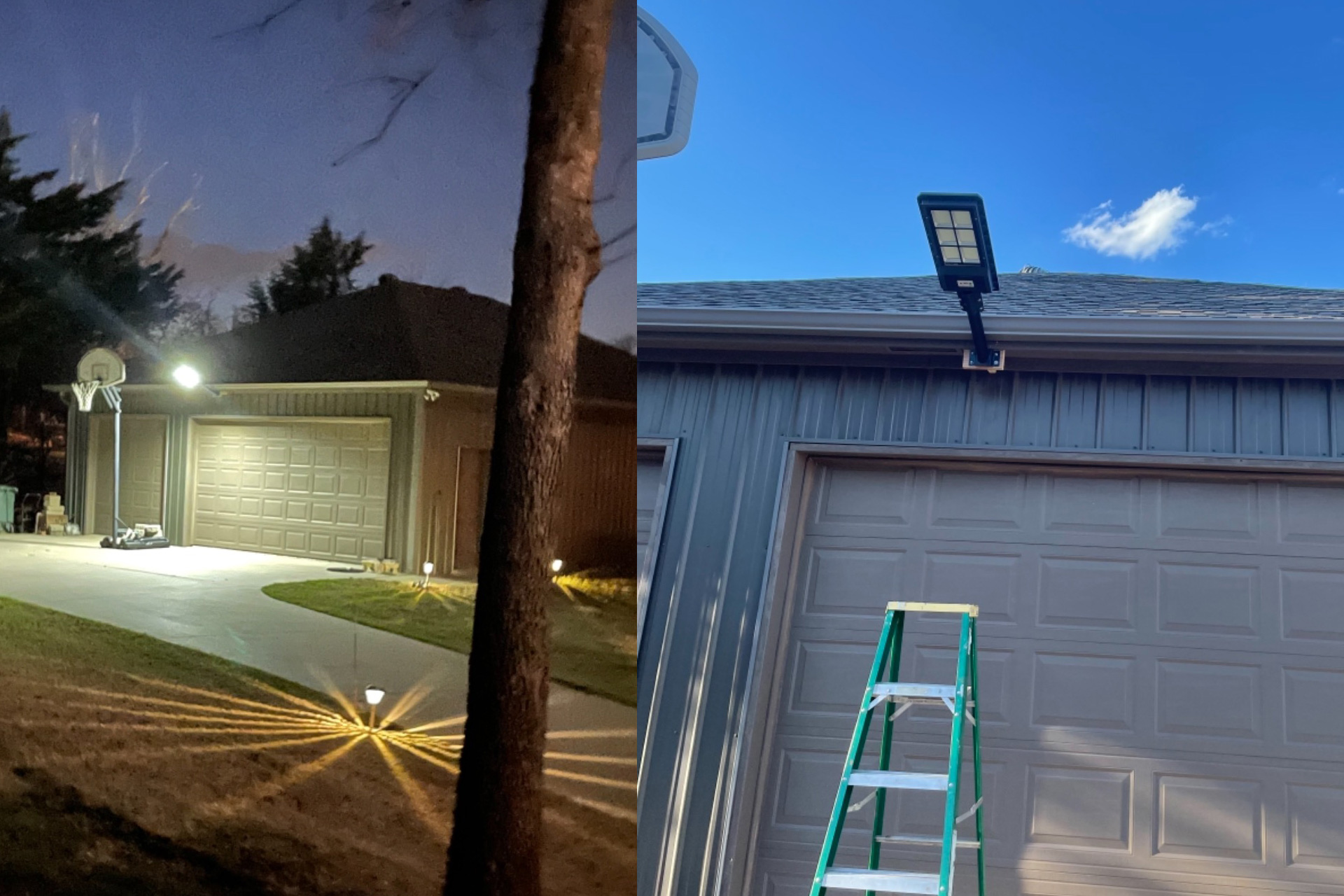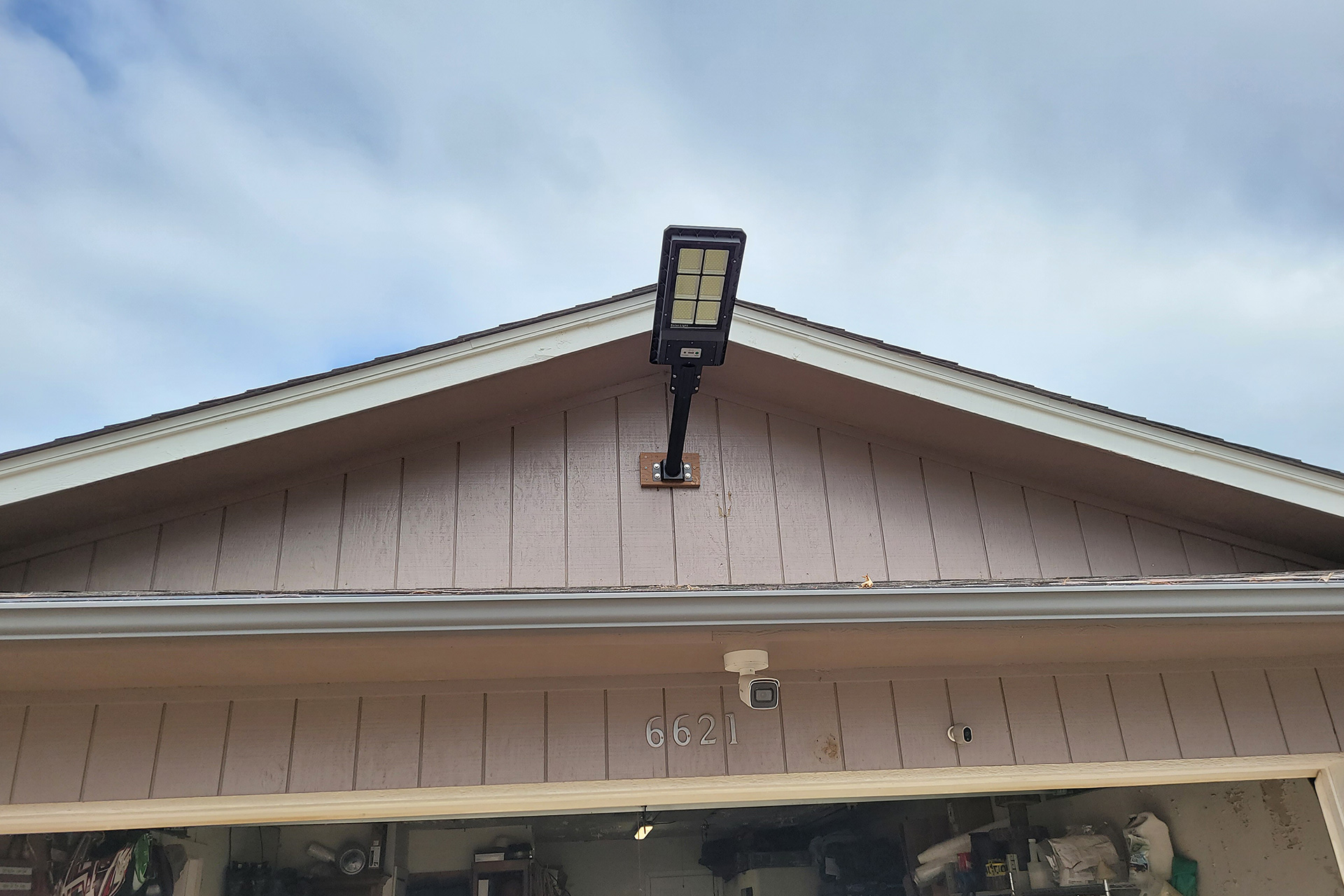Twenty years ago, solar energy could only appear in books or movies for ordinary people. Now, in 2020, solar energy has been widely used in industrial power generation, residential power generation, solar lighting, solar water pumps, etc. Especially this year, due to the epidemic, the price of solar panels has dropped to about US$0.18 per watt.
Table of Contents
I. Misunderstanding 1: Led quantity is equal to led power
II. Misunderstanding 2: Led power is equal to the brightness
III. Misunderstanding 3: Judge the charge controller quality by the current simply.
IV. Misunderstanding 4: Solar panel sizes equal to the solar panel power
V. Misunderstanding 5: Battery capacity is AH
VI. Misunderstanding 6: Led chip is very expensive
VII. Misunderstanding 7: The sample solar lights work well means Solar street lights quality is good

However, in 2019, the solar panel’s price needs to be US$0.3 per watt, which is currently the lowest in history. And people can easily buy various residential solar lights on Amazon such as solar garden lights, solar flood lights, solar security lights, and solar wall lights. Solar street lights are also common in various roads and public lighting places. The price of solar lights can be as cheap as tens of dollars or as expensive as hundreds of dollars. The solar lamp with dozens of dollars is used in the home, the brightness is low, the lighting time is short, and the life span is about one year. And hundreds of dollars of solar street lights are used in public lighting, which can hit thousands of lumens, stay on all night, and can work for 3 to 5 years or even more than 5 years.
When we buy solar lights, especially when buying solar street lights for government projects, we should pay attention to a few misunderstandings that are easy to make mistakes. Some misunderstandings are because of the customers’ understanding, and some are deliberately created by suppliers to confuse customers. The suppliers need to get orders from the customers while they also need enough profits.
However, the end customers mostly will find problems with the solar street lights they buy. So in this article, we listed 7 misunderstandings when purchasing solar lights, and also explained the technical reasons for these misunderstandings.

Misunderstanding 1: Led quantity is equal to led power
Here we can give you the correct conclusion directly: Led quantity does not mean the same led power.
In the description of most solar lights shop in Amazon, the led quantity is a key specification of the solar lights. Seem more led quantity means bigger power. Somehow, Led power can be set by the solar charge controller of any power to zero. The power of one led chip can be different from 0.2 Watt to 5 Watt or even more. Like the 2835 SMD led chip is 0.2 Watt, Phillips 3030 SMD is designed 0.3-1 Watt, and Phillis 5050 SMD can be set 5 Watt per piece as the highest.
And the price of different led chips with a different brand can also be different from $0.002 to $0.2 (example). So you can find easily that the led quantity can not be the key point of the solar lamp’s power nor does it represent the cost of solar lights. The same mistakes always happened to the solar street lights bids in the Philippines. In the solar street lamp parameter requirements, the number of LEDs is usually required to be no less than a number.
Misunderstanding 2: Led power is equal to the brightness
As the third-generation light source led can save more power to keep the same brightness. We calculate the brightness by the lumens(lm) but not the wattage. Because the brightness is decided by the luminous efficacy (lumens per wattage).
The luminous efficacy of the electric incandescent lamp is 12-24 lumens per wattage only. And the Compact Fluorescent Lamp fixtures can reach 50-60 lumens per wattage. And led can generate more lumens per watt (lm/w). Then the led lights fixtures in 2010 can reach 100-110 lumens per wattage.
In the market 2020, different types of led can generate different luminance efficacy (lm/w). Some led chips can reach more than 200lm/w, some can be only 130lm/w around. So the best to calculate the brightness is not by led power, but by the lumens.
In the summary of misunderstanding one and misunderstanding two, here we also want to remind that the solar lights led power is always labeled much higher than the real led power.
Take the solar flood lights in Amazon shop, for example, they have labeled 100 wattage solar floodlights, 200 wattage solar flood lights, and 300 wattage solar floodlights. The so-called 300watt solar flood lights, real led power is 15 watt at the highest. Because you can easily find that the solar panel power of it is only 25watt to 30watt. How can such a small power solar panel can support 300Watt led to power long time lighting? No more than one hour! Another key material is the battery, it is 3.2 voltage battery. As we mentioned previously, a 3.2 voltage system can support led power no more than 20watt. So if you deal with serious solar street lights projects for government, the key specification is not led by power but also the luminous efficacy of the whole solar light fixtures.
Misunderstanding 3: Judge the charge controller quality by the current simply.
The key to judging the charge controller quality is the charge controller’s broken rate in mass order. The 10A or 15A current of the controller is just to make sure the controller can drive enough solar panel power in a given voltage. And the quality of the charge controller is mainly decided by the technical accumulation from the real projects by Debugging and updating the hardware and software from the real problems. The cost of the solar charge controller is small in outdoor solar lights.
Misunderstanding 4: Solar panel sizes equal to the solar panel power
The solar panel can use less solar cell quantity to make sure the outlook and size of the solar panel the same. And some solar street lights factories will make not enough solar panel power to save the cost to get some orders. To make more profits, some factories will deliberately put broken solar chips in the solar panels to achieve sufficient size. Or they will use grade B or grade C solar cell which life span is very short.
Regarding solar panels, we would like to add one suggestion. Use monocrystalline solar panel but not the polycrystalline solar panel for the project using solar street lights. Because monocrystalline solar panels can get bigger power than the polycrystalline solar panel in cloudy days. And the led lighting time in the cloudy day is the key quality for the street lighting. Another reason the size of the monocrystalline solar panel can be 20% smaller than the polycrystalline solar panel in the same power. And the solar street lights need to be installed on top of the pole. Smaller weight and size of the solar street lights will make the installation easier and safer.
Misunderstanding 5: Battery capacity is AH
The battery capacity is voltage multiplied by AH. Some customers just request the ah of the battery. It is not enough, we also need to know the voltage of the battery. For instance, the 12 voltage 30ah battery is a 4 times capacity of 3.2 voltage 30ah battery.
Normally, small power solar flood led lights and the small power solar wall lights which are hot sales in Amazon and eBay are 3.2 voltage system batteries. But low voltage battery systems can not support big power led solar lights. Because smaller voltage, bigger currency needs to be set to reach the power wattage. Big currency needs thicker wire and will make the solar charge controller easy to be broken. As our experience, a 3.2 voltage battery system supports solar lights led power that no more than 20 wattages. However, led power under 20 watt, we advise using a low voltage system. Because the cost of the 3.2 voltage battery is much lower than the 12 voltage battery which needs a more complicated packing to precess. And the cost of the 3.2 voltage solar charge controller is also smaller than the 12 voltage controllers.

Misunderstanding 6: Led chip is very expensive
Here we must point out that the solar light has four main accessories. They are Solar panel, battery, Solar charge controller, and light source. A solar cell is a component that generates electrical energy by converting solar energy into electrical energy.
Compared to polycrystalline solar modules, monocrystalline solar modules have higher efficiency and lower production costs than polycrystalline modules. There is no reason to recommend monocrystalline solar cells for solar lights, but there are some reasons for the high cost and low efficiency of polycrystals.
Batteries are the energy storage devices in a solar system, but solar cells cannot store energy, so the solar lamp goes out immediately when a battery is present. Lithium batteries have a much longer life and less weight than lead-acid batteries.
But lithium batteries are more expensive for the same amount of energy than lead-acid or lithium batteries.
Solar chargers are the brains behind solar lights, and public lighting as a whole is growing rapidly, so the cost of batteries can fall sharply.
Currently, batteries are more expensive than lead-acid batteries, but not as expensive as lithium batteries. This allows the electrical energy generated by solar cells to be charged in a battery – safely, protected from the sun, wind, rain, or other sources of solar energy. LED is undoubtedly the only source of light for solar lamps and has the highest luminosity. Besides, solar charge controllers can be realized due to the low cost of lead-acid batteries, so that they can control the brightness of the lamp, which can be either dark or weak. LEDs with the same brightness can be used to save the total cost of the solar light. Compared to solar cells and batteries, LED removes the low.
The main cost of the solar street lights is the battery and solar panel. And the cost of the battery is the best in solar lights. Led take part 5% to 10% cost of the whole solar lights. So battery quality is the most important thing for solar lights purchasing. To lower the cost of the whole solar street lights fixtures cost, we advise using high luminous efficacy led chips which can reach more than 220 lumens per watt in 0.8 watts per piece. So that we can use lower led power to reach the same brightness and we can set lower wattage solar panels and smaller battery capacity to get the cheapest solar street lights.
Take the 6000 lumens all in one solar street lights for example, if we use 150 lumens per watt led solution, we need to set 70 watts solar panel and 12V 30AH lithium battery. If we use 200 lumens per watt led solution instead, led power can be 30 watts only. Then we can low down the solar panel power to 50 watts and lithium battery to 12V 22ah. The material cost of the 6000 lumens solar street lights can low down 15% around.
Until now, the expensive cost of the projects using solar street lights is the main reason to limit the high power solar lighting market demand. And we can imagine that the day that the battery cost low down to a very low level will be the day that the solar street lights are installed all around the streets.
Misunderstanding 7: The sample solar lights work well means Solar street lights quality is good
The solar lighting system is more complicated than the led lights because of the solar charge controller and battery. Sometimes, the sample of solar lights works well. But in mass orders, if the quality of the controller and battery is not good, the broken rate of the solar street lights will be very high.
And the 3 key points to judge the quality of the solar lights are the brightness(lumens), the lighting time in the night, and the cloudy days and the life span. The main material that determines the life of solar street lights is the lithium battery. Once the battery capacity is not big enough or the battery is not good quality, the life span of the solar lights can be no more than one year. So the samples can work well in several months but its lighting time will drop down later in one year.








